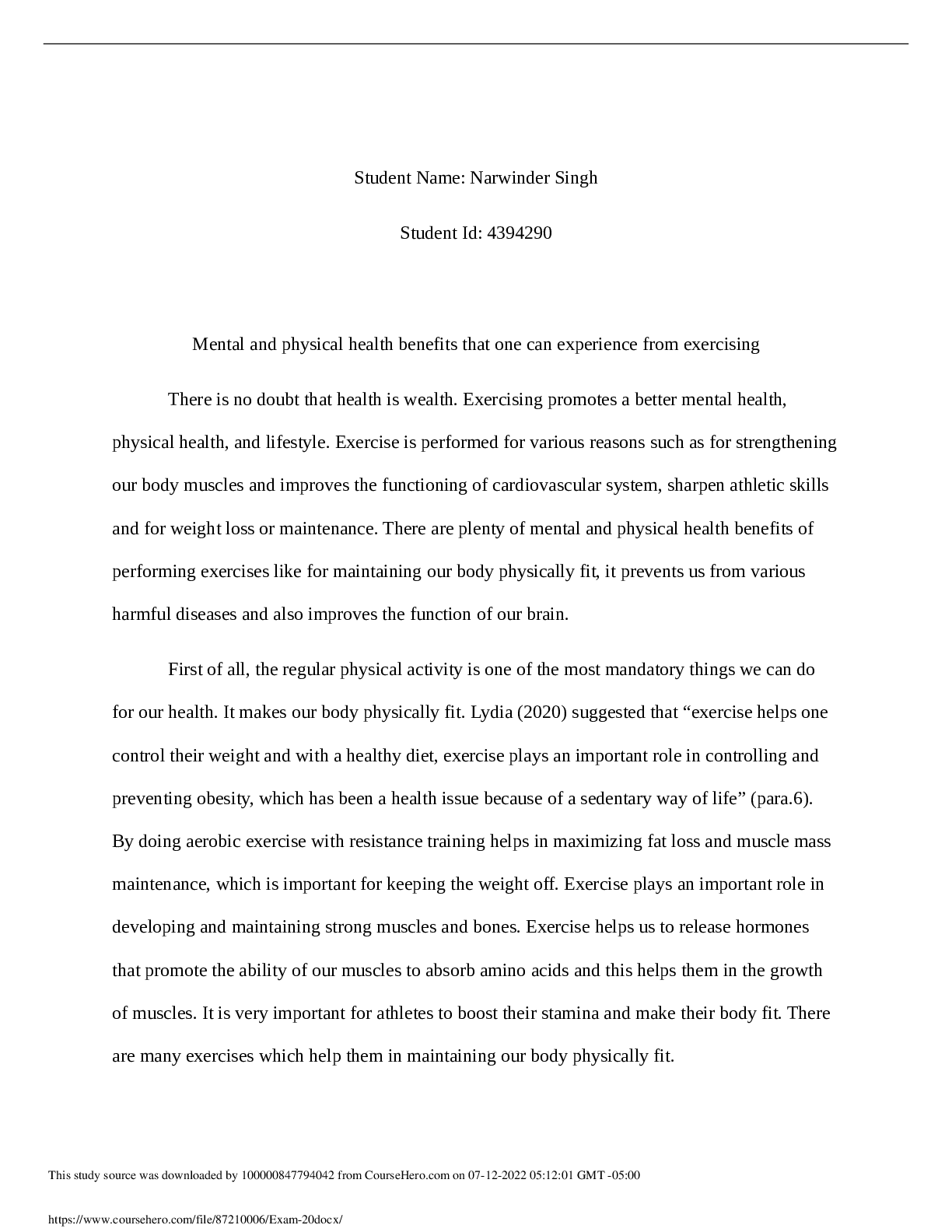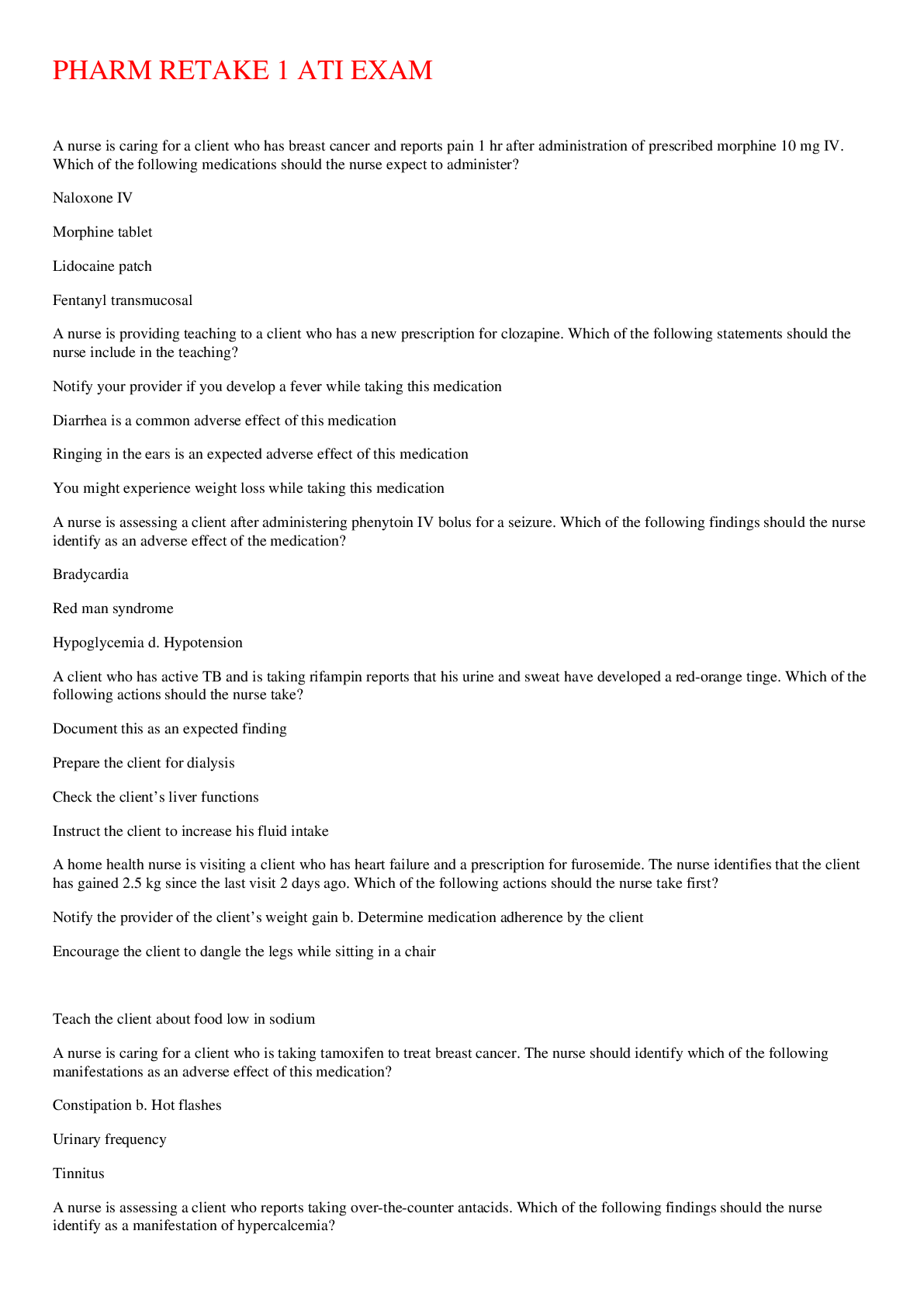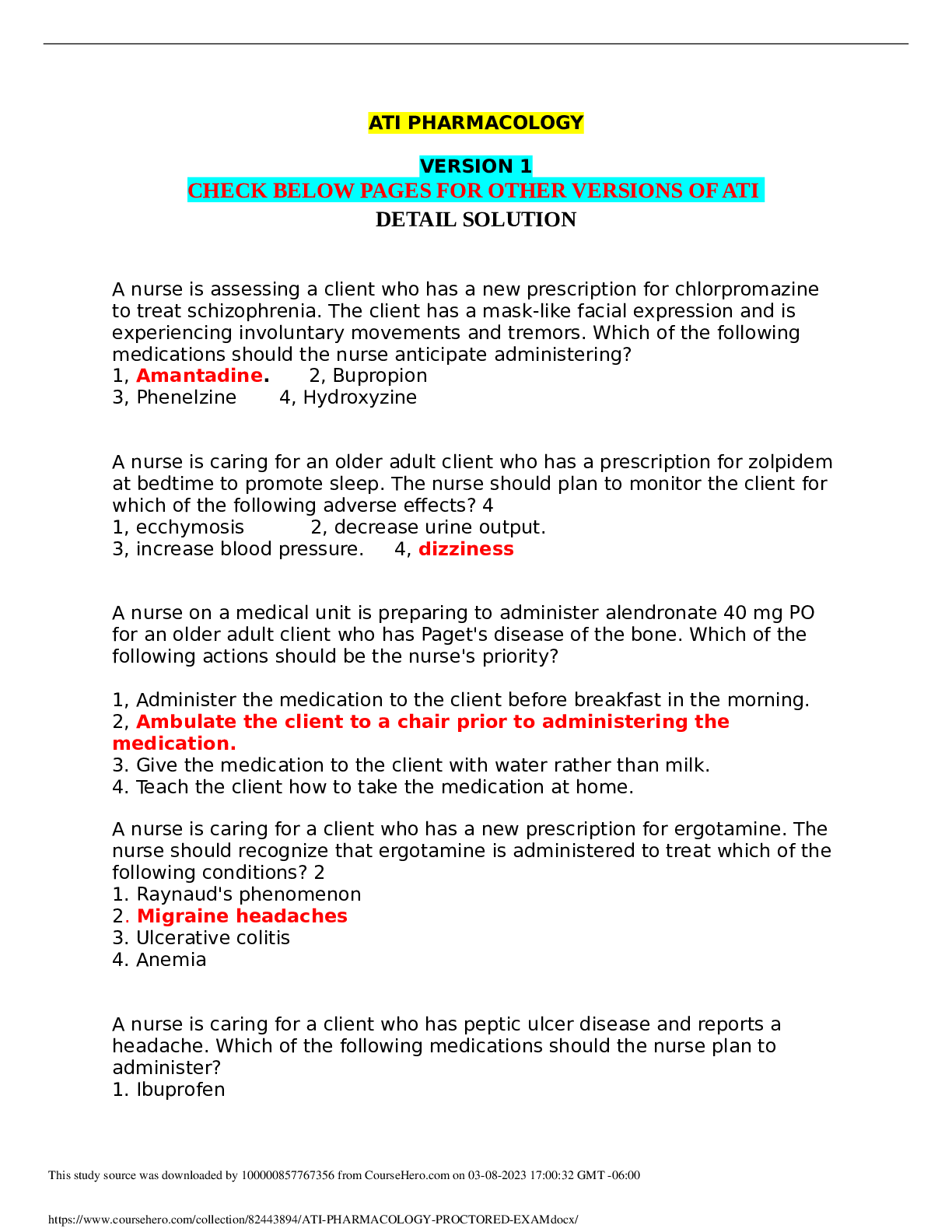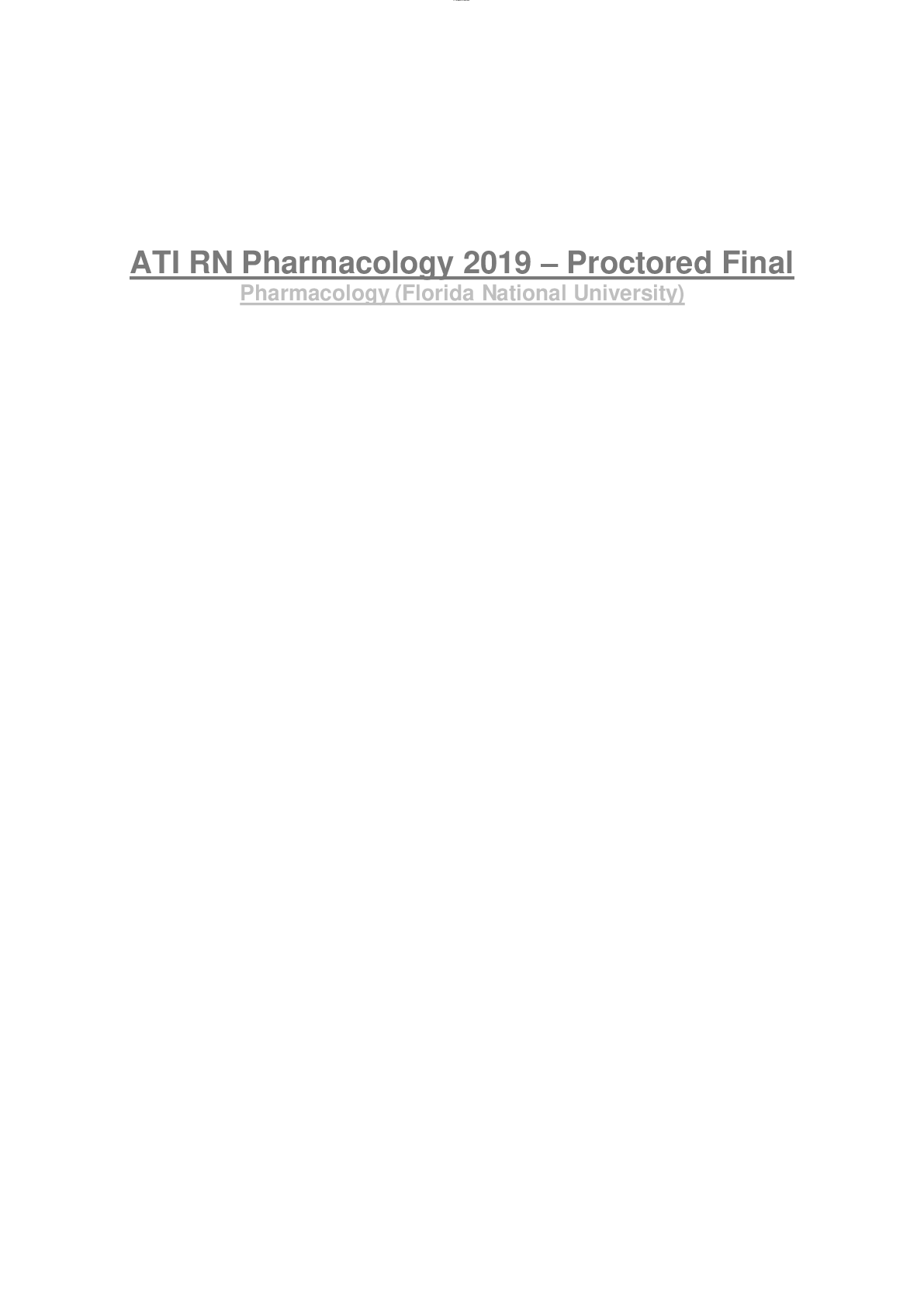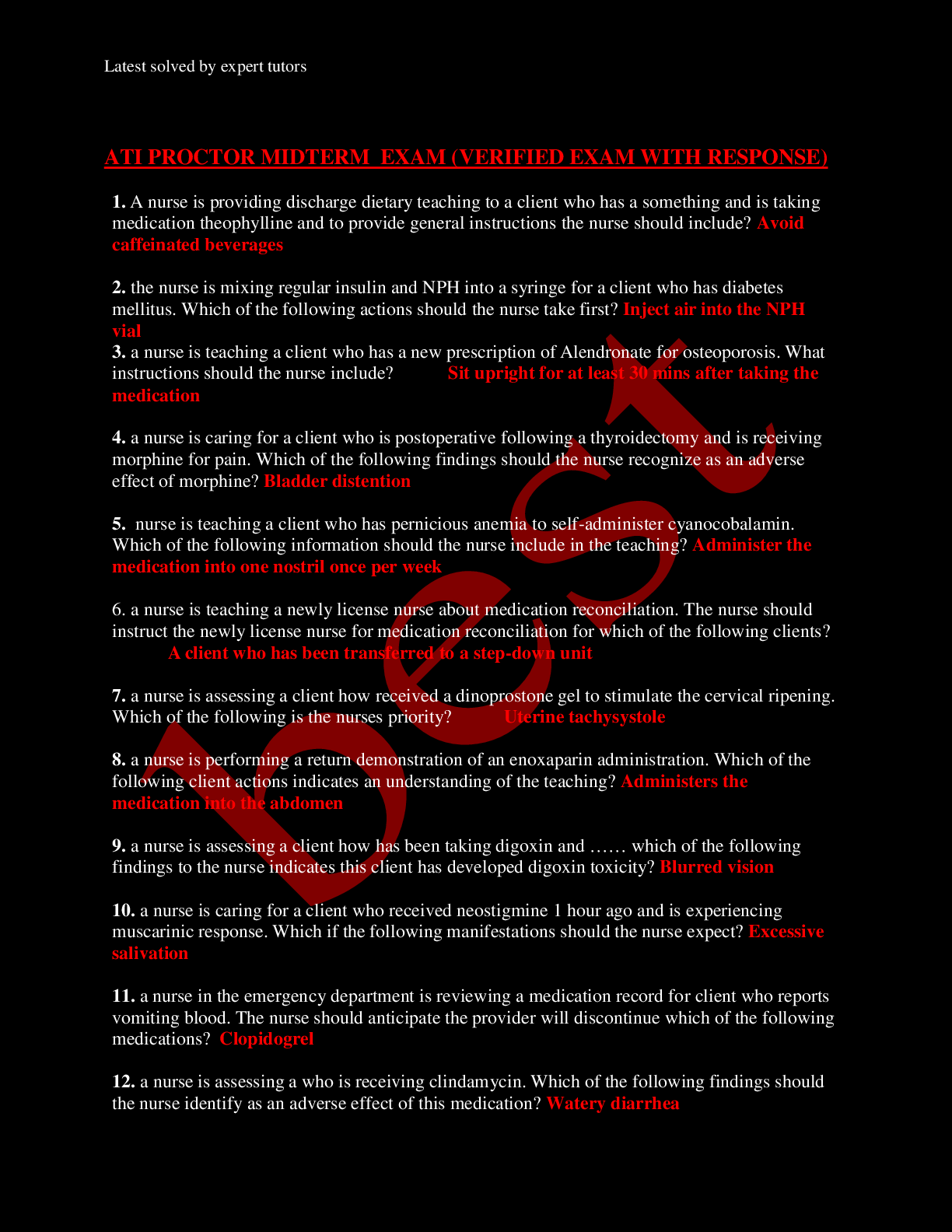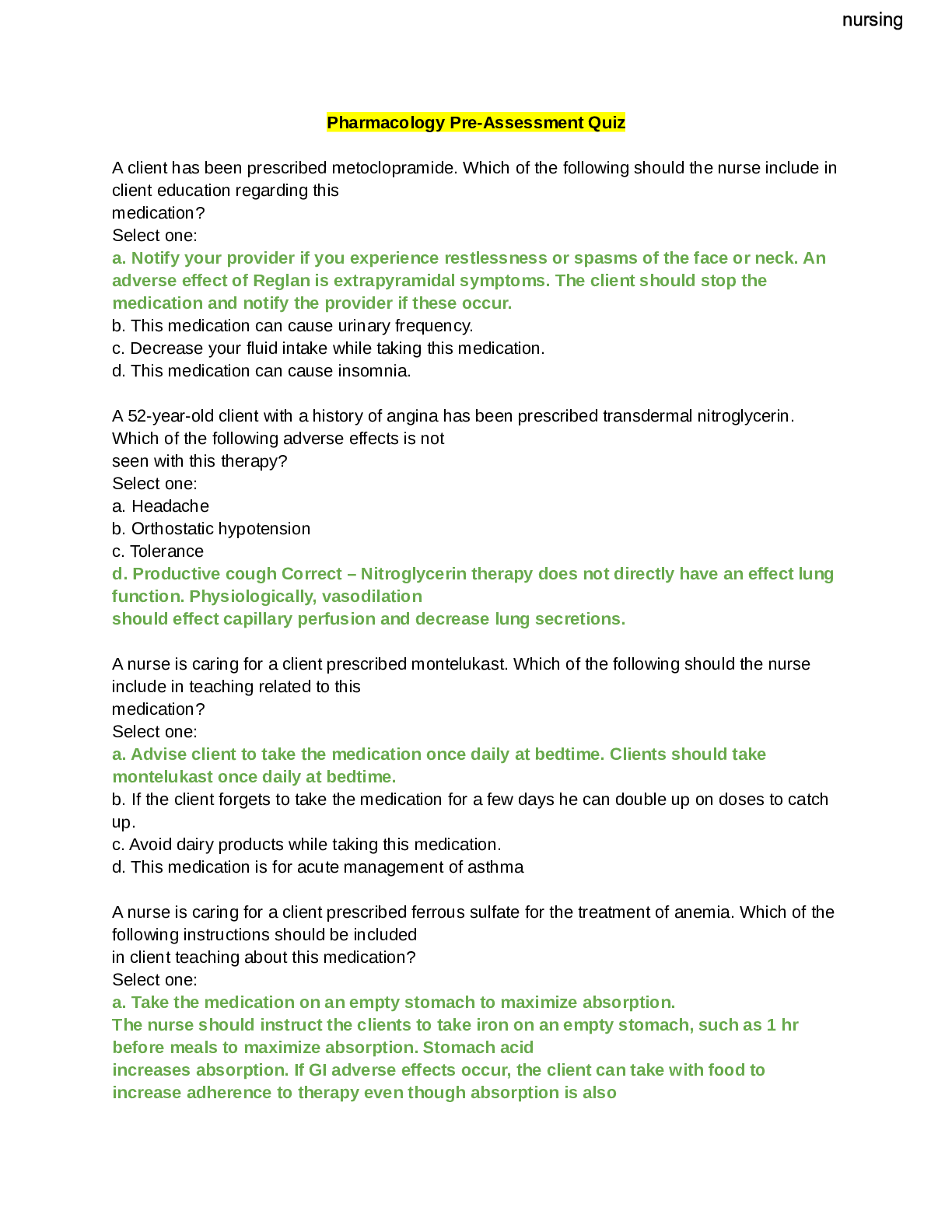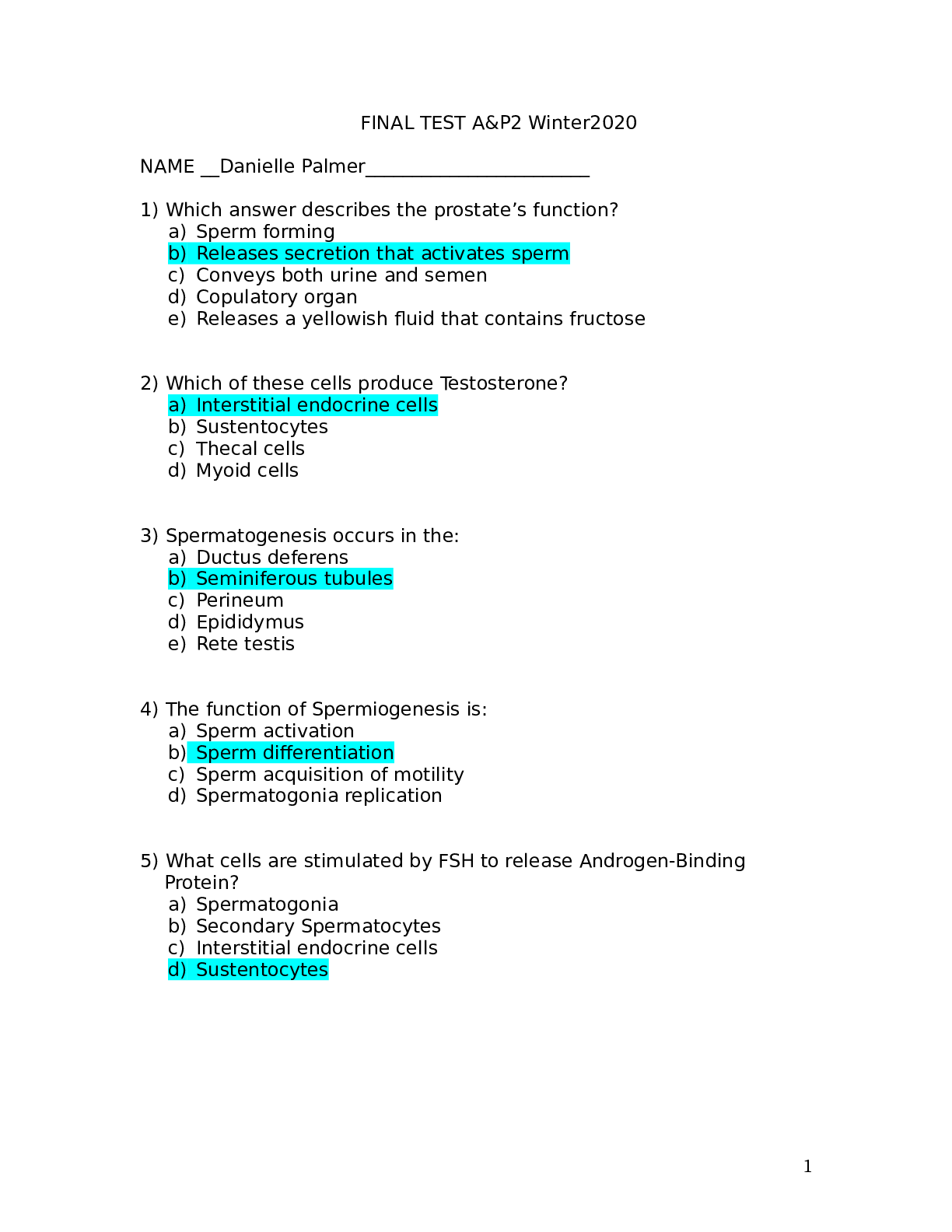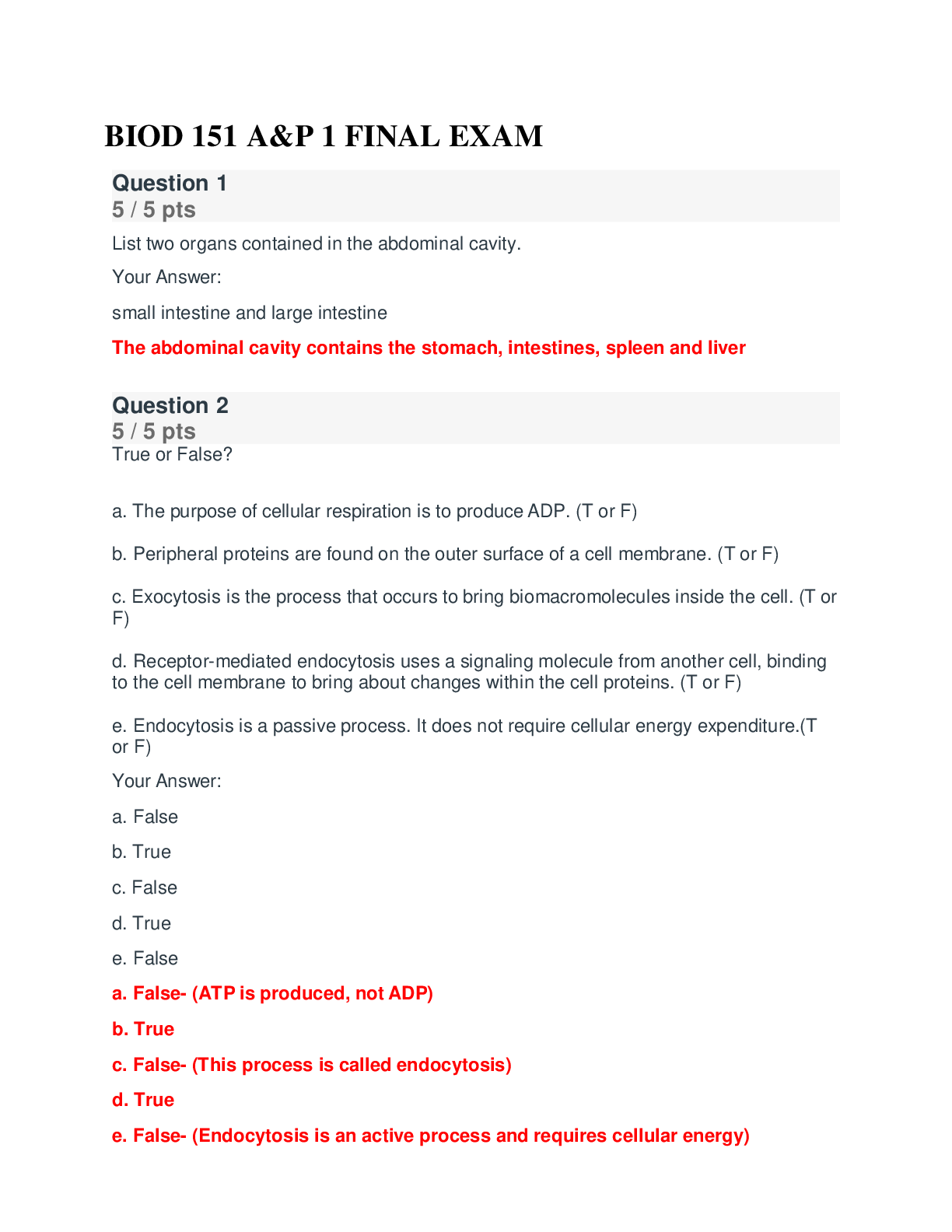Anatomy and Physiology - A&P 2 > EXAM > Anatomy_ and_ Physiology _FINAL TEST_ with_ EXPLAINATIONS _LATEST ALL EXAMINABLE|RATED 100% (All)
Anatomy_ and_ Physiology _FINAL TEST_ with_ EXPLAINATIONS _LATEST ALL EXAMINABLE|RATED 100%
Document Content and Description Below
Anatomy and Physiology Final test with answer keys: 1. Which of the following is not an anatomical direction? A. Supine Correct Body position Prone B. Proximal / Distal C. Medial / Lateral D. Ant... erior / Posterior 2. Anatomy is defined as the study of the A. function of a living organism and its parts. Physiology B. diseases of a living organism. Pathology C. structure of a living organism and the relationship of its parts. Correct D. growth of a living organism. Embryology / Developmental Biological Science 3. The smallest living unit of structure and function in the body is A. the organic compounds. Large complex molecules, C-C&C-H covalent bonds B. the cell. Correct C. DNA. An organic compound. D. organelles. Cellular structures that function for cellular homeostasis. 4. The plane that divides the body into front and back portions is the A. sagittal plane. / Left and Right B. transverse plane. / superior and inferior (up and down) C. frontal plane. Correct D. midsagittal plane. / equal two halves left and right 5. A very large molecule composed of subunits of sugar, nitrogen base, and a phosphate bond is a A. protein. / Building blocks = Amino Acids (20). E.g. collagen, actin, myosin, prolactin, T4. B. lipid. / Building blocks = fatty acids & Glycerol. E.g.Triglycerides, Cholesterol, Phospholipids. C. carbohydrate. / Building blocks = monosaccharides. E.g. glucose, fructose, galactose. Disaccharides e.g. maltose (bread, rye, wheat, caraway), lactose (milk), sucrose (table sugar = sugarcanes, honey, fruits). Polysaccharides e.g. starch. D. nucleic acid. / RNA (Ribose, Uracil), DNA (Deoxyribose, Thynine) Correct 6. A chemical bond formed by the sharing of one or more pairs of electrons between the outer shells of two atoms is called a(n) A. ionic bond. / attraction of positively and negatively charged molecules (ions). E.g. Na+ (Cation), Cl- (Anion) donate/receive electrons B. hydrogen bond. / weak, holding substances together through attraction (H+) C. covalent bond. Correct D. None of these is correct. 7. The atomic number of an atom is equal to the number of A. protons. Correct B. neutrons. C. electrons. / no calculations. D. Both A and B are correct. / Atomic mass = protons + neutrons. 8. Which of these lipids are found in the cell membrane? / bilayer of phospholipids, heads = outwards, tails = inwards. A. Triglycerides / Blood, adipose tissue, lacteals, liver, and brain. B. Phospholipids. / Building blocks = phosphate group (head, water)+ two fatty acids (tails, lipids). C. Cholesterol / stabilizes the phospholipids, maintains the integrity of cell membrane. D. Both B and C are correct. Correct 9. The two processes of protein synthesis are A. transcription and translation. Correct B. replication and duplication. / DNA during mitosis and meiosis (cellular reproduction). C. transcription and replication. / genes are inactive!!! D. translation and duplication. 10. Often referred to as the “power plant” of the cell, this organelle is the site of ATP production. A. Endoplasmic reticulum / protein processing and folding + maintains and replace cell membrane. B. Peroxisome / vesicles that contain hydrogen peroxide => destroy bacteria (TB, Pneumococcus, and meningococcus). C. Lysosome / vesicle contains lytic enzymes => destroy microbes. D. Mitochondria Correct 11. This process is the movement of water and solutes through a membrane by the force of hydrostatic pressure. / Kidneys A. Osmosis / movement of water B. Filtration Correct C. Diffusion / down gradient [particles moving from high concentration to low concentration] PASSIVE. D. Pinocytosis / cells digest fluids and other substances ACTIVE => use of ATP e.g. Na/K pump. 12. Spindle fibers form during this phase of mitosis. A. Prophase Correct B. Anaphase / Chromosomes are formed C. Telophase / daughter cells formed D. Metaphase / chromosomes align in the middle 13. This type of epithelial tissue would be found in the wall of the urinary bladder. A. Stratified squamous / GIT (mouth, esophagus), Skin (Keratinized). B. Cuboidal / kidneys, salivary glands, thyroid gland, pancreas. C. Stratified transitional Correct D. Simple columnar / stomach, small intestines, Upper respiratory airways ciliated Pseudostratified columnar. 14. Stratified squamous epithelial cells are found in the A. skin. Correct B. lining of the trachea. / ciliated pseudostratified columnar C. kidney tubules. / cuboidal D. urinary bladder. / stratified transitional 15. This type of epithelial tissue is found in the air sacs of the lung. A. Simple squamous /single layer and flat allows gas exchange Correct B. Striated squamous / NA C. Columnar D. Cuboidal 16. This type of epithelial tissue has adapted to a secretory function and forms clusters of cells called glands. A. Squamous epithelium B. Stratified squamous epithelium / skin C. Cuboidal epithelium / thyroid, salivary glands, pancreas. Correct D. Pseudostratified columnar epithelium / trachea UR tract 17. The system that includes the skin and its appendages is the A. integumentary system. Correct B. endocrine system. / glands => secrete products into blood directly. C. nervous system. / made of nervous tissue. D. lymphatic system. / lymph nodes, lymphatic vessels, spleen, thymus => immunity, circulation. 18. Kidneys, ureters, bladder, and urethra can be found in what system? A. Endocrine / endocrine glands, hypothalamus, thymus B. Digestive / GIT (primary), Accessory (teeth, tongue, liver, pancreas, gall bladder). C. Urinary system Correct D. Reproductive system / essential organs (gonads), reproductive tracts (uterine tubes, uterus, vas deferens, epididymis), and accessory glands (prostate, cowper, bartholine) External genitalia. 19. The vas deferens, prostate, and testes are part of the A. male reproductive system. Correct B. female reproductive system. / uterus (uterine tubes), vestibular glands (bartholine), and ovaries. C. endocrine system. D. respiratory system. 20. Alveoli are found in the A. digestive system. B. respiratory system. / lungs Correct C. lymphatic system. D. urinary system. 21. The tonsils, thymus, and spleen are specialized organs of what system? A. Endocrine / thyroid, adrenal, pituitary, pancreatic islets B. Cardiovascular / heart, blood vessels C. Urinary / kidneys, urinary bladder, ureters, urethera. D. Lymphatic Correct 22. Of the following, which best describes the process of hyperplasia? A. Abnormal, undifferentiated tumor cells / Anaplasia B. Production of too few cells / Hypoplasia C. Production of too many cells / Number of cells Correct D. “Cancer genes” / oncogenes 23. The actual pattern of a disease’s development is called its A. pathogenesis. / How? Correct [Show More]
Last updated: 1 year ago
Preview 1 out of 18 pages
Instant download

Buy this document to get the full access instantly
Instant Download Access after purchase
Add to cartInstant download
Reviews( 0 )
Document information
Connected school, study & course
About the document
Uploaded On
Jul 05, 2022
Number of pages
18
Written in
Additional information
This document has been written for:
Uploaded
Jul 05, 2022
Downloads
0
Views
43

